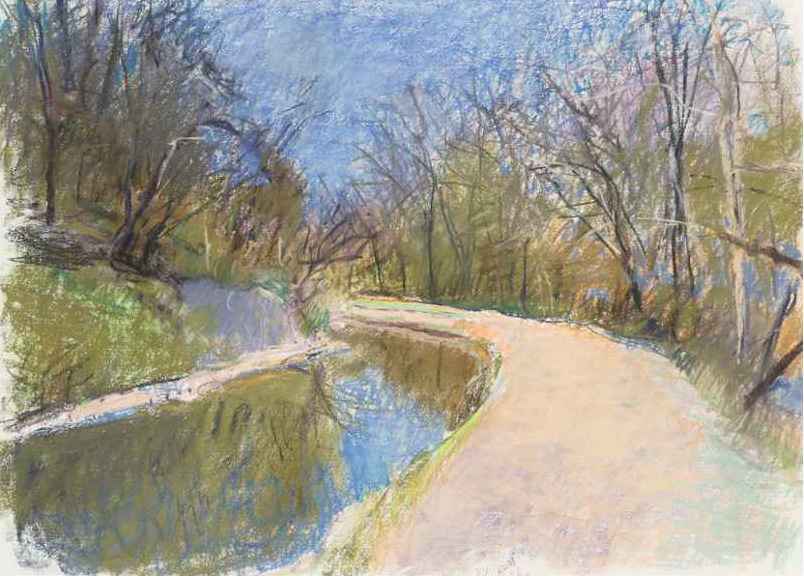 |
"Bend in the Chesapeake Ohio Canal"
Pastel, 21x29
by Wolf Kahn
Courtesy of The Granary Gallery |
Wolf Kahn died this past week, aged 92. I never met Kahn, nor his wife, fellow painter Emily Mason, who died last December. When I first started working in pastel, there was much talk among pastel painters about him. Although he worked in oil, he was one of the few well-known painters who also worked regularly in pastel. I am always surprised by his sometimes-subtle, sometimes-raw expression with color. His mastery flies lightyears beyond mere technique; his paintings possess a kabbalistic yet childlike quality that many try to imitate without success.
Originally from Stuttgart, Germany, he came to America during the Hitler years. He studied with Abstract Expressionist Hans Hoffman and soon became his studio assistant. In New York City, he and other Hoffman students founded the Hansa Gallery (named after their teacher.) In 1968, he and Emily purchased a farm near Brattleboro, Vermont, where they spent time when not in the city.
From his website, www.WolfKahn.com :
The unique blend of Realism and formal discipline of Color Field painting sets the work of Wolf Kahn apart. Kahn is an artist who embodies a synthesis of artistic traits—the modern abstract training of Hans Hofmann, the palette of Matisse, Rothko’s sweeping bands of color, and the atmospheric qualities of American Impressionism. The fusion of color, spontaneity and representation has produced a rich and expressive body of work.A painter friend of mine once remarked that Kahn was a painter who understood that sometimes you don't have to take a painting any further than the underpainting to call it done. Many of his paintings do look like underpaintings; yet, to my mind, they have an “implied” or “predicted” finish in the way he made marks with pastel or brush. You knew where he was going with it and didn't need any more.
Although both of us at one time lived in Vermont concurrently, I never had the pleasure of meeting Kahn. My mentor years ago, Ann Templeton, had, and she once took a workshop with him. She told me that he never let a student take more than one; he didn't want to turn out a bunch of little Wolf Kahns but hoped each student would find his own way. When we were working on her book, The Art of Ann Templeton: A Step Beyond, she felt he had been such a mentor to her that she called him up to ask if he might contribute an image for the chapter on her teachers. He respectfully declined, adding that he had stopped teaching. With the onset of macular degeneration, he had decided to put all his energy to just painting.
